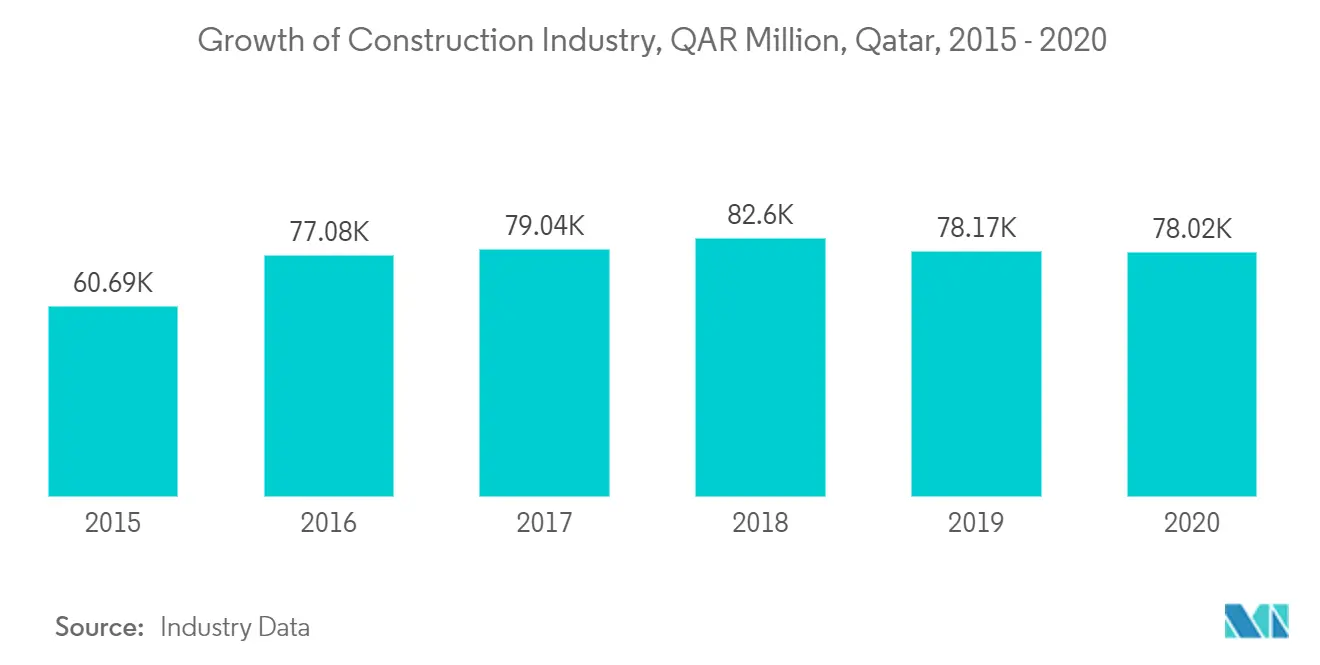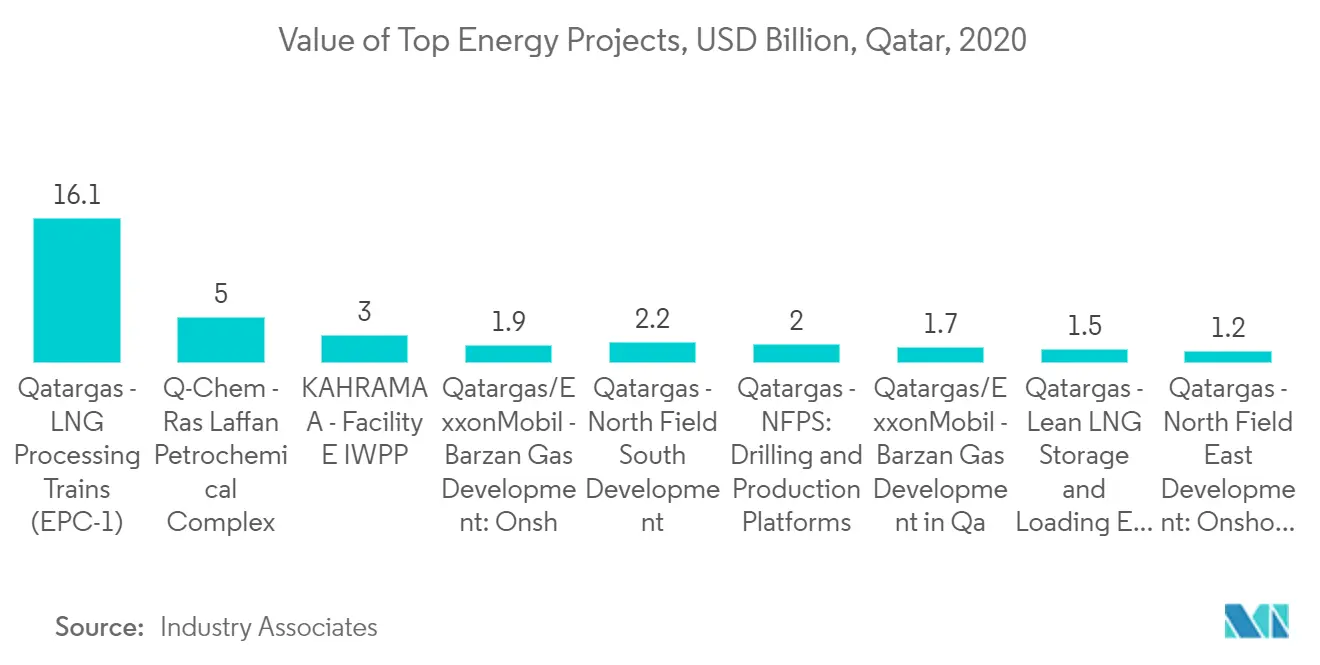Market Trends of Analysis of Key Sectors and Investment Opportunities in Qatar
This section covers the major market trends shaping the Qatar Investment Opportunities Market according to our research experts:
Growth of Construction Industry
Due to continued government spending on projects, construction activity in the country has remained stable. The government's goal of diversifying the economy, with an emphasis on non-oil sectors, will stimulate investment into construction projects over the predicted period. Construction activity rebounded by 115 percent in the first three quarters of 2021, with the annual rate of change increasing from negative 3.9 percent in 2020 to positive 0.6 percent at the end of September 2021, according to GDP data. Qatar's construction sector is predicted to increase at a rate of 4.2 percent per year between 2022 and 2025, thanks to Qatar National Vision 2030, which calls for QAR 60 billion in infrastructure and real estate projects by 2025.
Over the last few years, Qatar's building industry has grown to become a major economic engine. New train and metro lines, a rising airport and port, and a quickly expanding road network have all contributed to the Gulf state's double-digit growth rates, making it a development hotspot. In 2020, QAR 22.6 billion were allocated to the healthcare sector, accounting for about 11% of total expenditure. The expansion of Hamad Medical Corporation facilities and the development of multiple additional healthcare centers are two major projects aimed at improving healthcare services.
In the 2020 budget, the educational sector got QAR 22.1 billion, accounting for 10.5 percent of overall spending. Expansions of schools and other educational institutions are among the major projects now ongoing in the education sector, which is leveraging the newest technologies in project management, recycling, and BIM (building information modeling). Technology, digital, and BIM all have key roles to play in improving productivity and disrupting the present delivery paradigm through innovation to offer superior results.

Increase Of Government Investments On Various Infrastructure Projects:
In addition to infrastructure projects in key sectors such as health and education, developing citizens' lands, supporting food security, and developing infrastructure in free, economic, industrial, and logistical zones, the 2021 budget focused on providing the necessary allocations to complete various major projects and projects related to hosting the 2022 World Cup within the approved timetable. The Ministry of Finance has also adopted the principle of medium-term planning and making estimates for the general budget for the years 2021 to 2023, after reviewing projects and programs for all sectors during the next phase, in order to support the process of economic diversification and promote growth, and all ministries and government agencies are committed to the financial ceilings set for the medium term 2021-2023.
On behalf of Qatar Energy, Qatargas is implementing the North Field expansion project, which is divided into two phases: the first is the North East Field project, which aims to increase liquefied natural gas production capacity from 77 million tonnes per year to 110 million tonnes per year by 2025, and the second aims to increase production to 126 million tonnes per year by 2027, while the expansion will also result in the production of about 4,000 tonnes per year.
According to the Qatar Tourism Authority's tourism performance report, the hotel sector in Qatar is experiencing rapid growth despite the effects of the Corona pandemic in the run-up to the 2022 World Cup, which resulted in a 7 percent increase in the supply of hotel room keys in the first half of 2021. Due to the government's development policy and the solutions it presents, the real estate sector in Qatar is one of the fastest expanding economic activities and a haven for many investors, increasing the number of real estate businesses operating. The entire anticipated spending in the real estate sector is USD 53.4 billion, with USD 19.7 billion going towards big projects.


